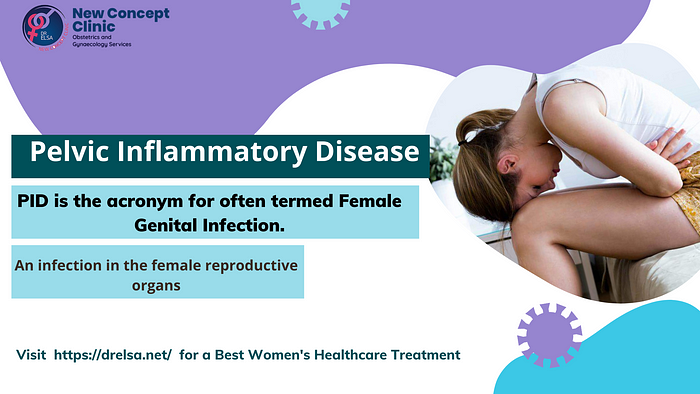
PID is the acronym for Pelvic Inflammatory Disease often termed Female Genital Infection. Pelvic Inflammatory Disease is an infection in the female reproductive organs that includes organs like the uterus, fallopian tube, and ovaries spreading upwards from the cervix to the uterus. The common bacteria involved in the cause of Pelvic Inflammatory Disease are Chlamydia trachomatis and Neisseria Gonorrhoeae.
Other conditions related to the problem of Pelvic Inflammatory Disease are:
- Cervicitis: It is referred to as an inflammation of the cervix caused by a sexually transmitted infection.
- Salpingitis: It is referred to as an inflammation of the fallopian tube caused by bacterial infection.
- Endometritis: It is referred to as an inflammation of the uterus lining called Endometrium caused by an infection in the uterus.
- Peritonitis: It is referred to as an inflammation of the peritoneum, a silk-like membrane covering the abdomen caused by a bacterial or fungal infection.
Genesis of Pelvic Inflammatory Disease
Pelvic Inflammatory Disease in general is caused by different types of bacteria arising from Sexual Transmitted Infection, STI. The disease is caused by two bacterias called Chlamydia and Gonorrhea which are carried in the semen and body fluid of the infected people. As the disease is carried by women during sexual intercourse the germs are spread to the women’s cervix.
According to Dr. Elsa, a Gynecology Surgeon in Dubai a person is also at risk for developing Pelvic Inflammatory Disease when have had an STI, have had PID, are sexually active, have had multiple sex partners, have unsafe sexual habits, etc.
Indication of Pelvic Inflammatory Disease
The most common symptoms involved in Pelvic Inflammatory Disease that a woman faces are:
- Abdominal pain
- Back pain
- Colour changes in vaginal discharge
- Chills
- Fever
- Nausea
- Painful urination
- Irregular menstruation
- Vomiting
- Pain during sexual intercourse
Diagnosis of Pelvic Inflammatory Disease
There is no particular test for PID that can reflect the disease but the doctor can diagnose the condition on the basis of your medical history, symptoms, and pelvic exam. Other than these there are several other tests that a doctor can ask you for like tests for Urinary Tract Infection, different ultrasounds, etc.
The course of Medication for Pelvic Inflammatory Disease
A severe increase in Pelvic Inflammatory Disease can lead to different problems in women in which the biggest of all is infertility. Early diagnosis and early treatment can lower the severity of the diseases and the risk of other problems associated. There are different treatment procedures to follow like:
- Antibiotic Treatment: The antibiotic treatment of Pelvic Inflammatory Disease lasts for 14 days that includes antibiotics like Cefoxitin, Metronidazole, ceftriaxone, and doxycycline, etc. For a patient, it is advised to follow the doctor’s instructions and complete all the prescriptions offered.
- Hospitalization: Hospitalization usually occurs if a woman with PID is pregnant and has severe symptoms.
- Surgery: A rarely needed course of medication in Pelvic Inflammatory Disease is surgery. It is a keyhole surgery leading to the removal of both fallopian tubes resulting in the condition that women can never get pregnant naturally.
No comments:
Post a Comment